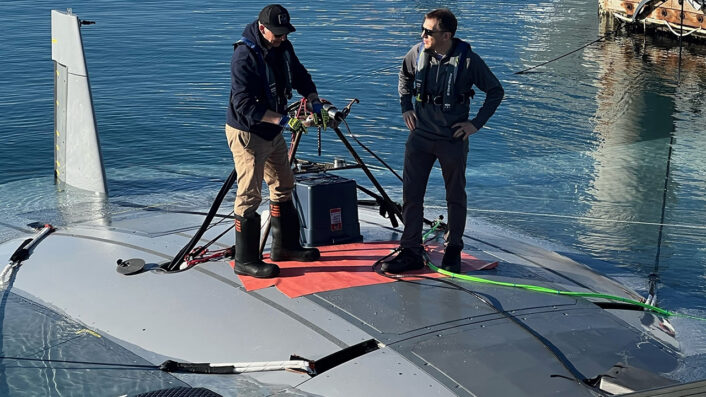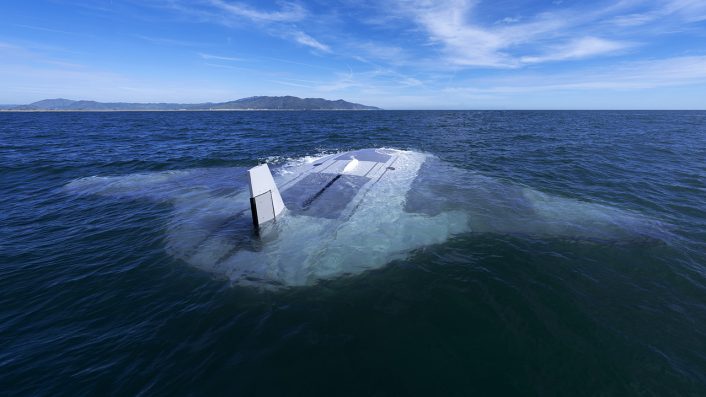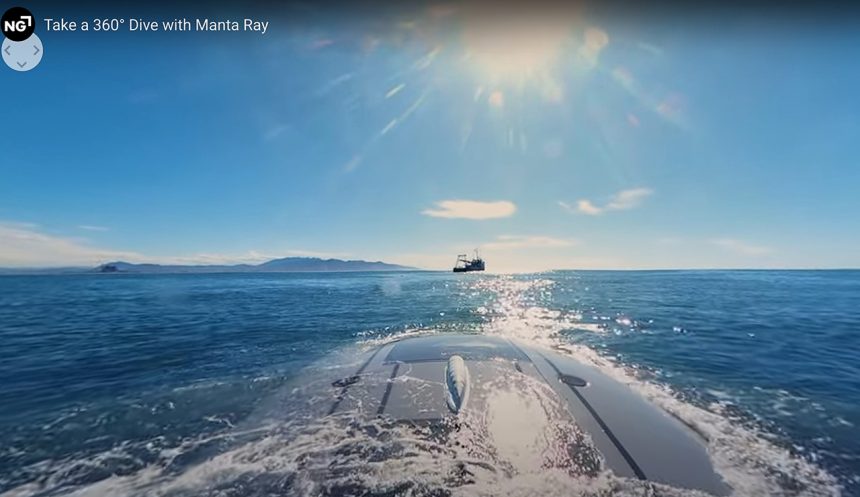The video shows the prototype during in-water testing, performing some diving and resurfacing maneuvers as part of the submerged operations’ testing.
After the first photos released last month, Northrop Grumman has now released a 360° video of the in-water test campaign of Manta Ray, the full-size uncrewed underwater vehicle (UUV) prototype being developed for DARPA (Defense Advanced Research Projects Agency).
Manta Ray is an extra-large glider designed to undertake extended-duration, long-range, and payload-capable undersea missions independently, without requiring on-site human logistics.
The Manta Ray prototype underwent comprehensive full-scale testing off the coast of Southern California during February and March 2024. According to DARPA, which released the first photos of the prototype in the water, this testing phase focused on evaluating the vehicle’s hydrodynamic performance in real-world conditions.
The testing included submerged operations utilizing all modes of propulsion and steering: buoyancy, propellers, and control surfaces. The video released yesterday focuses on these operations, showing the prototype diving and resurfacing, both statically and during forward movement.
Some frames show air being discharged from the buoyancy tanks in a little more visible way than one would expect from an evasive underwater drone. However, we should remember that Manta Ray aims to demonstrate critical technologies for a new class of long duration, long range, payload-capable UUVs, so it is possible that there wasn’t a specific focus on the buoyancy system.
The Manta Ray program
The development of Manta Ray stems from a DARPA initiative focused on advancing critical technologies for future underwater unmanned vehicle (UUV) designs. This program targets advancements in energy management techniques, enhanced payload capacity, low-power propulsion systems, and other key areas aimed at improving UUV capabilities.
Northrop Grumman indicates that Manta Ray will feature advanced command, control, and communications (C3) capabilities, facilitating extended-duration operations with minimal human oversight. The data collected by Manta Ray will enhance decision-making for joint forces, providing a strategic advantage during missions.
In 2021, Northrop Grumman was awarded a Phase 2 contract to further the Manta Ray program initiated in 2020. Under Phase 2, the project involves the development of full-scale demonstration vehicles by two prime contractors: Northrop Grumman Systems Corporation and Martin Defense Group. Each contractor is tasked with creating unique vehicles to showcase specific capabilities within the Manta Ray program.

USOs theories
If you check the comment threads under all the articles we have already published on the Manta Ray prototype, you’ll find out that speculations have been circulating suggesting that advanced underwater drones, such as the giant Northrop Grumman one, could potentially explain many instances of USOs.
USOs, or Unidentified Submerged Objects, are mysterious underwater phenomena similar to UFOs (Unidentified Flying Objects) but occurring below the water’s surface. USOs are objects or entities seen or detected underwater that cannot be readily identified by witnesses or through conventional means.
Enthusiasts and skeptics alike propose that the capabilities of the Manta Ray (and eventually other underwater drones), like its ability to operate independently for extended durations, its advanced hydrodynamic performance, and its capacity for rapid and agile underwater maneuvers, align closely with the characteristics often attributed to USOs. The secrecy and strategic concealment surrounding the development of such underwater drones add to these speculations, leading some to believe that sightings of USOs might actually be encounters with cutting-edge military technology rather than extraterrestrial or unexplained phenomena.
As more information about the Manta Ray and similar projects becomes available, it could demystify some of the USO sightings, providing a terrestrial explanation rooted in advancements in underwater drone technology. However, until there is direct evidence linking these drones to specific USO incidents, the connection remains speculative, contributing to the ongoing intrigue and debate surrounding unidentified underwater phenomena.










